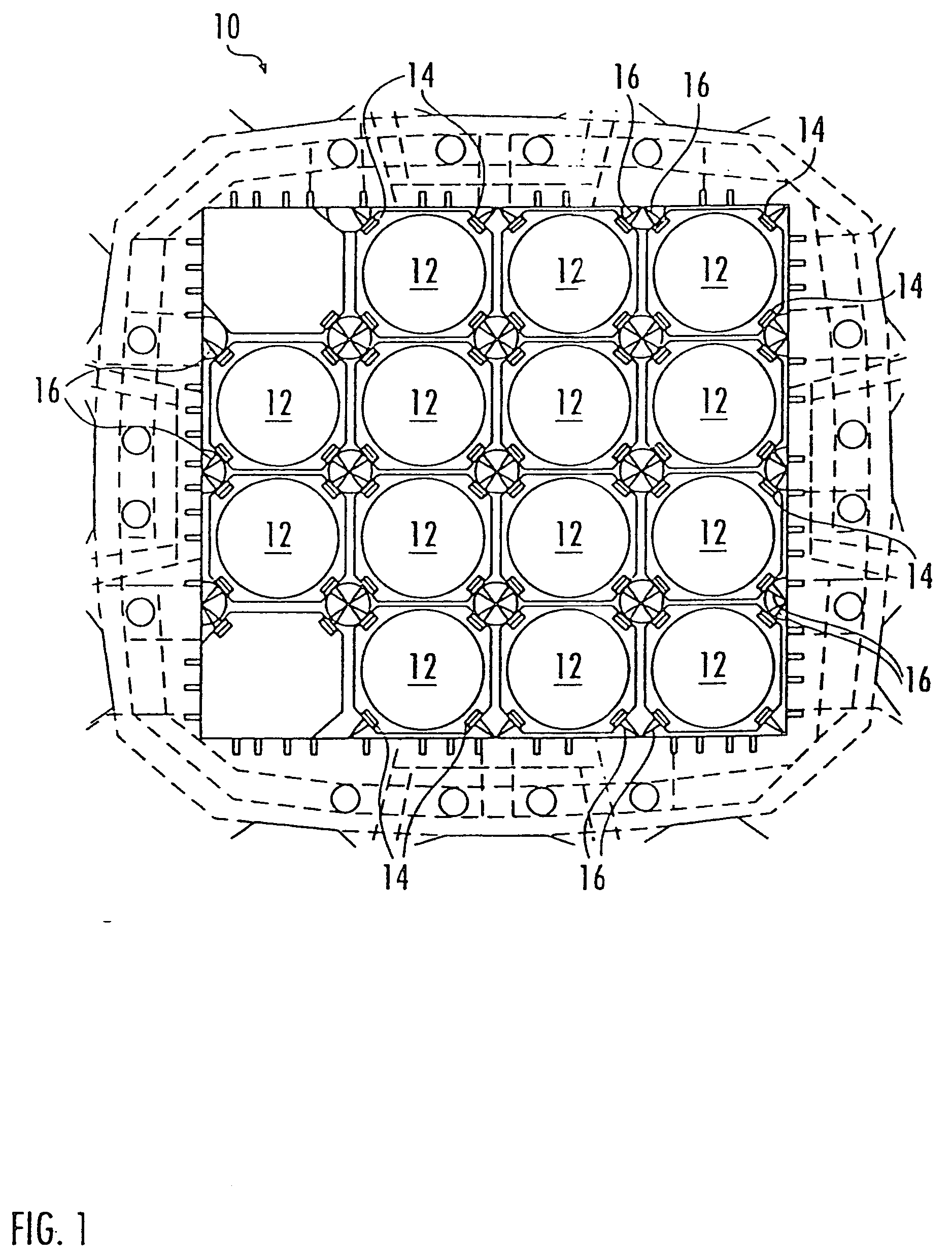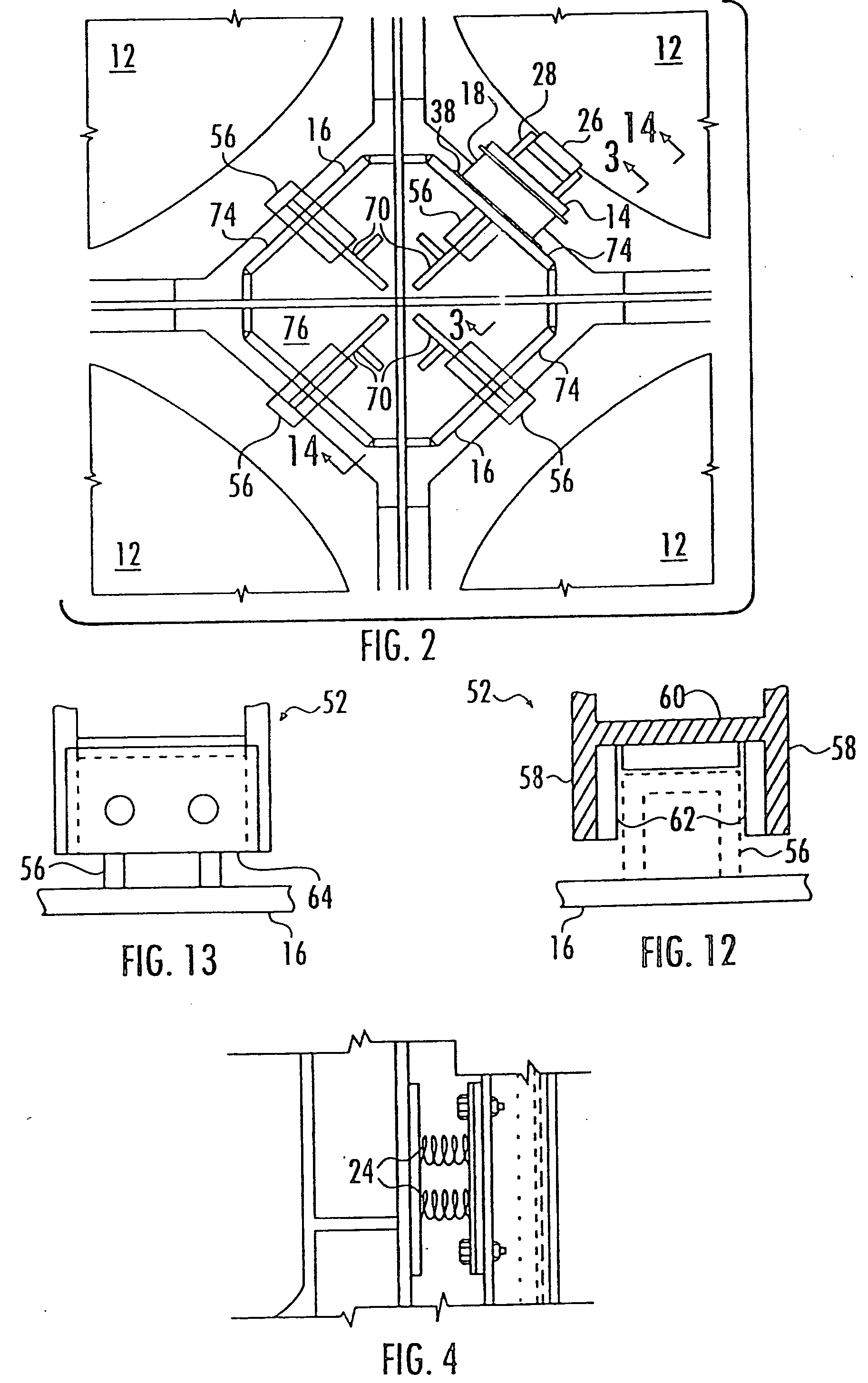Compliant buoyancy can guide
a technology of buoyancy guide and compliant, which is applied in the direction of special purpose vessels, vessel construction, and borehole/well accessories, etc., can solve the problems of insufficient account, difficult practical design of strength and fatigue, and different nature of signals, etc., to reduce stick-slip fatigue, less stiffness, and cost-effective
- Summary
- Abstract
- Description
- Claims
- Application Information
AI Technical Summary
Benefits of technology
Problems solved by technology
Method used
Image
Examples
Embodiment Construction
[0046] In FIG. 1, there is shown, in a lateral cross-sectional view, a spar-type floating offshore mineral exploration and production platform, generally designated 10. In this example, the platform 10 includes a plurality of cylindrical buoyancy cans 12. A plurality of compliant guides 14 are spaced around the exterior circumferential surface of each buoyancy can 12. Although FIG. 1 shows four compliant guides 14 for each buoyancy can 12, it will be understood that more or fewer guides 14 may be used. The platform 10 in the present example also includes a plurality of support structures 16 to which the compliant guides 14 are attached. Examples of buoyancy cans 12, compliant guides 14, and support structures 16 are more clearly seen in FIG. 2, and will be more fully described below.
[0047] Referring now to FIG. 3, the illustrated exemplary compliant guide 14 includes three vertically spaced elastomeric compression pads 18, 20, and 22. Lateral movement of the buoyancy can 12 (not sh...
PUM
 Login to View More
Login to View More Abstract
Description
Claims
Application Information
 Login to View More
Login to View More - R&D
- Intellectual Property
- Life Sciences
- Materials
- Tech Scout
- Unparalleled Data Quality
- Higher Quality Content
- 60% Fewer Hallucinations
Browse by: Latest US Patents, China's latest patents, Technical Efficacy Thesaurus, Application Domain, Technology Topic, Popular Technical Reports.
© 2025 PatSnap. All rights reserved.Legal|Privacy policy|Modern Slavery Act Transparency Statement|Sitemap|About US| Contact US: help@patsnap.com



